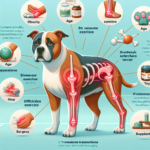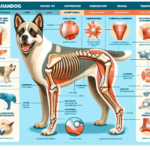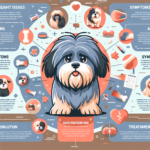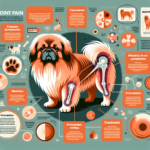Bracco Italiano Joint Pain: Causes, Symptoms, Prevention, and Treatment
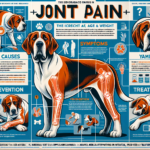
Introduction
The Bracco Italiano, also known as the Italian Pointer, is a versatile and ancient breed that has been a favorite among hunters for centuries. Originating from Italy, this breed is known for its distinctive appearance, characterized by a muscular build, long ears, and expressive eyes. The Bracco Italiano is not only a skilled hunting dog but also a loyal and affectionate companion, making it a popular choice for families and outdoor enthusiasts alike.
Like many breeds, the Bracco Italiano is prone to certain health issues, with joint pain being a significant concern. Joint health is crucial for this breed, given its active lifestyle and working background. Ensuring the well-being of their joints can help maintain their quality of life and prolong their active years.
Breed-Specific Joint Pain Risks
Genetic Predisposition
The Bracco Italiano, like many large breeds, is genetically predisposed to joint-related issues. Common conditions include hip dysplasia, elbow dysplasia, and arthritis. Hip dysplasia, in particular, is a hereditary condition where the hip joint does not fit properly into the hip socket, leading to pain and mobility issues. Elbow dysplasia involves abnormal development of the elbow joint, causing lameness and discomfort. Arthritis, a degenerative joint disease, can also affect this breed, especially as they age.
Age-Related Risks
As the Bracco Italiano ages, the risk of developing joint pain increases. Typically, signs of joint issues may start to appear in middle age, around 5 to 7 years old. However, some dogs may show symptoms earlier, especially if they have a genetic predisposition. It’s essential for owners to monitor their dogs closely as they age and be vigilant for any signs of joint discomfort.
Activity Level and Joint Stress
The Bracco Italiano is an active and energetic breed, often used for hunting and other high-energy activities. While their activity level is beneficial for their overall health, it can also contribute to joint stress. Repetitive motions, high-impact activities, and excessive exercise can exacerbate joint issues, making it crucial for owners to balance their dog’s activity levels to prevent overexertion.
Common Symptoms of Joint Pain in Bracco Italiano
General Symptoms
- Limping: One of the most noticeable signs of joint pain is limping or favoring one leg over another.
- Stiffness: Dogs may show stiffness, especially after resting or during cold weather.
- Reluctance to Move: A dog in pain may be hesitant to jump, climb stairs, or engage in physical activities they once enjoyed.
- Swelling: Swelling around the joints can be a sign of inflammation and discomfort.
- Behavioral Changes: Irritability, lethargy, or changes in appetite can also indicate joint pain.
Breed-Specific Symptoms
In the Bracco Italiano, joint pain may manifest as a reluctance to participate in hunting or other high-energy activities. Owners may also notice a decrease in their dog’s endurance and stamina. Given their expressive nature, changes in their usual behavior or mood can be a significant indicator of discomfort.
When to Consult a Vet
If you observe any of the above symptoms in your Bracco Italiano, it’s essential to consult a veterinarian promptly. Early diagnosis and intervention can help manage the condition more effectively and improve your dog’s quality of life.
Preventive Measures for Joint Health
Exercise Recommendations
Regular, moderate exercise is crucial for maintaining joint health in the Bracco Italiano. Activities such as walking, swimming, and controlled play can help keep their joints flexible and muscles strong without causing excessive stress. Avoid high-impact activities like jumping or running on hard surfaces, which can exacerbate joint issues.
Dietary Suggestions
A balanced diet rich in essential nutrients can support joint health. Consider incorporating foods or supplements that contain glucosamine, chondroitin, and omega-3 fatty acids, which are known to promote joint health and reduce inflammation. Consult your veterinarian for specific dietary recommendations tailored to your dog’s needs.
Weight Management
Maintaining a healthy weight is vital for reducing joint stress. Excess weight can put additional pressure on the joints, exacerbating pain and discomfort. Regularly monitor your dog’s weight and adjust their diet and exercise routine as needed to keep them at an optimal weight.
Early Screening and Monitoring
Regular veterinary check-ups and early screening for joint issues can help catch problems before they become severe. For the Bracco Italiano, consider screening for hip and elbow dysplasia, especially if there is a family history of these conditions. Early intervention can significantly improve outcomes and quality of life.
Treatment Options for Joint Pain
Non-Surgical Treatments
Non-surgical treatments for joint pain in the Bracco Italiano include medications, physical therapy, and lifestyle adjustments. Anti-inflammatory drugs and pain relievers can help manage symptoms, while physical therapy can improve mobility and strengthen muscles. Lifestyle changes, such as providing a comfortable resting area and avoiding high-impact activities, can also alleviate discomfort.
Surgical Options
In severe cases, surgical intervention may be necessary. Common surgical options include hip replacement, arthroscopy, and joint fusion. These procedures can provide significant relief and improve mobility, but they come with risks and require a thorough discussion with your veterinarian to determine the best course of action.
Alternative Therapies
Alternative treatments such as acupuncture, hydrotherapy, and massage can also benefit dogs with joint pain. Acupuncture can help reduce pain and inflammation, while hydrotherapy provides low-impact exercise that strengthens muscles without stressing the joints. Massage can improve circulation and alleviate muscle tension, contributing to overall joint health.
Lifestyle and Management Tips
Daily Care Routine
A consistent daily care routine can help manage joint pain in the Bracco Italiano. This routine might include gentle exercise, a balanced diet, and regular administration of any prescribed medications or supplements. Monitoring your dog’s behavior and adjusting their routine as needed can also help manage their condition effectively.
Modifying the Home Environment
Making your home more comfortable for a dog with joint pain can significantly improve their quality of life. Consider using ramps instead of stairs, providing orthopedic beds for better support, and ensuring that their living area is free of obstacles that could cause injury.
Long-Term Management
Long-term management of joint pain involves regular veterinary check-ups, ongoing monitoring of your dog’s condition, and making necessary adjustments to their care routine. Keeping your dog active and engaged, while avoiding activities that could exacerbate their condition, is crucial for maintaining their quality of life.
FAQs About Bracco Italiano and Joint Pain
What are the early signs of joint pain in a Bracco Italiano?
Early signs of joint pain include limping, stiffness, reluctance to move, and behavioral changes such as irritability or lethargy. If you notice any of these symptoms, consult your veterinarian promptly.
Can joint pain in Bracco Italiano be prevented?
While genetic predisposition cannot be entirely prevented, maintaining a healthy weight, providing a balanced diet, and ensuring regular, moderate exercise can help reduce the risk of joint pain. Early screening and monitoring can also catch issues before they become severe.
Are there specific exercises that are better for Bracco Italiano with joint pain?
Low-impact exercises such as walking and swimming are ideal for dogs with joint pain. These activities help maintain joint flexibility and muscle strength without causing excessive stress.
What dietary supplements are recommended for joint health in Bracco Italiano?
Supplements containing glucosamine, chondroitin, and omega-3 fatty acids are beneficial for joint health. Always consult your veterinarian before adding any supplements to your dog’s diet.
When should I consider surgical options for my dog’s joint pain?
Surgical options should be considered when non-surgical treatments are no longer effective, and your dog’s quality of life is significantly impacted. Discuss the potential benefits and risks with your veterinarian to determine the best course of action.
Conclusion
Joint pain is a common concern for the Bracco Italiano, but with proper care and attention, it can be managed effectively. By understanding the breed-specific risks, recognizing early symptoms, and implementing preventive measures, owners can help ensure their dogs lead active and comfortable lives. Regular veterinary consultations and a proactive approach to joint health are essential for maintaining the well-being of this beloved breed.
Remember, early intervention and consistent care are key to managing joint pain in the Bracco Italiano. By taking preventive measures and seeking professional advice when needed, you can help your dog enjoy a happy and healthy life.

